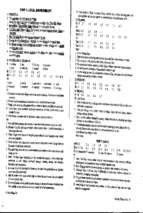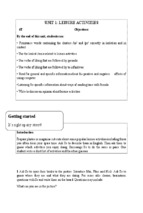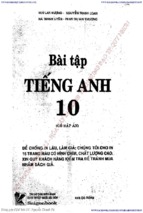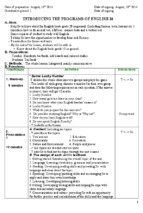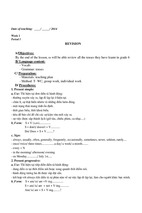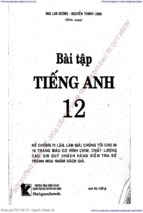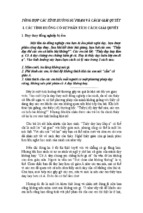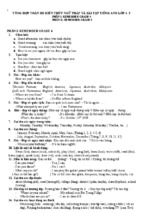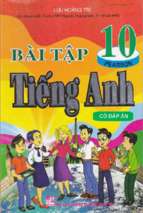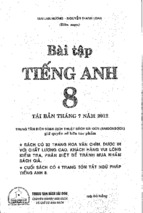ENGLISH GRAMMAR
This best-selling comprehensive descriptive grammar forms a complete course, ideal
for all students studying English Language, whether on a course or for self-study.
Broadly based on Hallidayan systemic-functional grammar but also drawing on cognitive linguistics and discourse analysis, English Grammar is accessible, avoiding overly
theoretical or technical explanations.
The book consists of twelve self-contained chapters built around language functions,
and each chapter is divided into units of class-length material. Key features include:
••
••
••
Numerous authentic texts from a wide range of sources, both spoken and written,
which exemplify the grammatical description;
Clear chapter and unit summaries which enable efficient class preparation and
student revision;
Extensive exercises with a comprehensive answer key.
This new edition has been thoroughly updated with new texts, a more user-friendly
layout, more American English examples and a companion website, providing extra
tasks, a glossary and a teachers’ guide.
This is the essential coursebook and reference work for all native and non-native
students of English grammar on English language and linguistics courses.
Angela Downing is Professor Emeritus at Universidad Complutense de Madrid,
Spain. She was General Editor of Atlantis (Journal of the Spanish Association of English
and American Studies) from 2006 to 2012 and has published numerous articles on grammar and discourse.
This page intentionally left blank
ENGLISH GRAMMAR
A university course
Third edition
Angela Downing
Third edition published 2015
by Routledge
2 Park Square, Milton Park, Abingdon, Oxon OX14 4RN
and by Routledge
711 Third Avenue, New York, NY 10017
Routledge is an imprint of the Taylor & Francis Group, an informa business
© 2015 Angela Downing
The right of Angela Downing to be identified as author of this work has been
asserted by her in accordance with sections 77 and 78 of the Copyright,
Designs and Patents Act 1988.
All rights reserved. No part of this book may be reprinted or reproduced or
utilised in any form or by any electronic, mechanical, or other means, now
known or hereafter invented, including photocopying and recording, or in any
information storage or retrieval system, without permission in writing from the
publishers.
Trademark notice: Product or corporate names may be trademarks or
registered trademarks, and are used only for identification and explanation
without intent to infringe.
First published 1992 by Prentice Hall International (UK) Ltd
Routledge edition first published 2002
Second edition published 2006 by Routledge
British Library Cataloguing-in-Publication Data
A catalogue record for this book is available from the British Library
Library of Congress Cataloging-in-Publication Data
Downing, Angela.
English grammar: a university course/Angela Downing.—Third edition.
p. cm
Includes bibliographical references and index.
1. English language—Grammar. 2. English language—Grammar—Problems, exercises, etc.
3. English language—Textbooks for foreign speakers. I. Title.
PE1112.D68 2015
428.2—dc23
2014024429
ISBN: 978-0-415-73267-3 (hbk)
ISBN: 978-0-415-73268-0 (pbk)
ISBN: 978-1-315-75004-0 (ebk)
Typeset in Amasis
by Swales and Willis Ltd, Exeter, Devon, UK
CONTENTS
List of figures
ix
Preface to the third edition xi
Acknowledgements xii
Introduction to the third edition xiv
Table of notational symbols xviii
1 Basic concepts
1
Unit 1 Language and meaning
Unit 2 Linguistic forms and syntactic functions
Unit 3 Negation and expansion
Exercises
3
9
21
28
2 The skeleton of the message: introduction to
clause structure
31
Unit 4 Syntactic elements and structures of the clause
Unit 5 Subject and Predicator
Unit 6 Direct, Indirect and Prepositional Objects
Unit 7 Subject and Object Complements
Unit 8 Adjuncts
Further reading
Exercises
33
40
47
60
65
72
72
3 The development of the message: complementation
of the verb
77
Introduction: Major complementation patterns and valency
79
Unit 9 Intransitive and copular patterns
81
Unit10
Transitive patterns
85
Unit 11 Complementation by finite clauses
94
Unit 12 Complementation by non-finite clauses
101
Summary of major verb complementation patterns
107
Further reading
108
Exercises
108
vi ENGLISH GRAMMAR
4 Interaction between speaker and hearer: linking
speech acts and grammar 111
Unit 13 Speech acts and clause types
Unit 14 The declarative and interrogative clause types
Unit 15 The exclamative and imperative clause types
Unit 16 Indirect speech acts, clause types and discourse functions
Unit 17 Questions, clause types and discourse functions
Unit 18 Directives: getting people to carry out actions
Further reading
Exercises
5 Conceptualising patterns of experience: processes,
participants, circumstances
Unit 19 Conceptualising experiences expressed as situation types
Unit 20 Material processes of doing and happening
Unit 21 Causative processes
Unit 22 Processes of transfer
Unit 23 Conceptualising what we think, perceive and feel
Unit 24 Relational processes of being and becoming
Unit 25 Processes of saying, behaving and existing
Unit 26 Expressing attendant circumstances
Unit 27 Conceptualising experiences from a different angle:
Nominalisation and grammatical metaphor
Further reading
Exercises
6 Organising the message: thematic and information
structures of the clause
Unit 28 Theme: the point of departure of the message
Unit 29 The distribution and focus of information
Unit 30 The interplay of Theme–Rheme and Given–New
Further reading
Exercises
7 Combining clauses into sentences
Unit 31 Clause combining: the complex sentence
Unit 32 Relationships of equivalence between clauses
Unit 33 Relationships of non-equivalence between clauses
Unit 34 Subordination and subordinators
Unit 35 Discourse functions of conjunctions
Unit 36 Reporting speech and thought
Further reading
Exercises
113
117
126
133
137
141
148
149
153
155
160
164
169
171
176
182
186
190
197
197
203
205
220
227
242
243
247
249
253
258
261
267
271
279
280
CONTENTS
8 Talking about events: the Verbal Group
Unit 37 Expressing our experience of events
Unit 38 Basic structures of the Verbal Group
Unit 39 Organising our experience of events
Unit 40 The semantics of phrasal verbs
Further reading
Exercises
9 Viewpoints on events: tense, aspect and modality
vii
285
287
293
300
303
310
311
315
Unit 41 Expressing location in time through the verb: tense
Unit 42 Past events and present time connected: Present Perfect
and Past Perfect
Unit 43 Situation types and the Progressive aspect
Unit 44 Expressing attitudes towards the event: modality
Further reading
Exercises
326
334
343
355
356
10 Talking about people and things: the Nominal Group
359
Unit 45 Expressing our experience of people and things
Unit 46 Referring to people and things as definite, indefinite, generic
Unit 47 Selecting and particularising the referent: the determiner
Unit 48 Describing and classifying the referent: the pre-modifier
Unit 49 Identifying and elaborating the referent: the post-modifier
Unit 50 Noun complement clauses
Further reading
Exercises
11 Describing persons, things and circumstances:
adjectival and adverbial groups
Unit 51 Adjectives and the adjectival group
Unit 52 Degrees of comparison and intensification
Unit 53 Complementation of the adjective
Unit 54 Adverbs and the adverbial group
Unit 55 Syntactic functions of adverbs and adverbial groups
Unit 56 Modification and complementation in the adverbial group
Further reading
Exercises
12 Spatial, temporal and other relationships: the
Prepositional Phrase
Unit 57 Prepositions and the Prepositional Phrase
Unit 58 Syntactic functions of the Prepositional Phrase
317
361
375
381
392
401
410
414
414
419
421
428
437
443
448
455
459
459
465
467
475
viii ENGLISH GRAMMAR
Unit 59 Semantic features of the Prepositional Phrase
Further reading
Exercises
479
487
487
Answer Key
491
Select Bibliography
509
Index 513
FIGURES
1.1 Participant, process and circumstances
5
1.2 Semantic roles
5
1.3 Order of syntactic elements in the declarative clause
6
1.4 Order of syntactic elements in the interrogative clause
6
1.5 Theme-Rheme order
7
1.6 Combining the three structures
7
1.7 Units on the rank scale
11
1.8 Components and realisations
19
2.1 Subject and Predicator
34
2.2 Object (O) and Complement (C)
34
2.3 Direct Object (Od) and Indirect Object (Oi)
35
2.4 Complement types
35
2.5 Anticipatory ‘it’ as stand-in for displaced Subject
44
2.6 Anticipatory ‘it’ as Object + clause as Object
49
2.7 Recipient as Indirect Object and Beneficiary as Indirect Object
51
2.8 Recipient as Subject and Beneficiary as Subject
52
2.9.1 Multi-word verb and Object
58
2.9.2 Verb and PP as Adjunct or Comp
58
2.10 Manner of movement – Extent – Path – Goal – Purpose
68
3.1 Main clause and embedded nominal wh-clause 95
4.1 Clause types or moods
114
4.2 Correspondence between clause types and speech acts
114
4.3 Clause types and the ordering of the subject and finite
118
4.4 Imperative and declarative
129
4.5 Negative and emphasis
130
4.6 Let’s and Let us
131
4.7 Clause types and illocutionary force
147
5.1 The circumstantial role
157
5.2 Agentive Subject of a voluntary process of ‘doing’
161
5.3 Affected participant in a voluntary process of ‘doing’
161
5.4 Affected Subject in a passive clause
161
5.5 Force
162
5.6 Involuntary processes of ‘happening’
163
5.7 Transitive-causative structure
164
x ENGLISH GRAMMAR
5.8 Anti-causative structure
5.9 Analytical causatives with a resulting attribute
5.10 Summary of examples of transitivity structures in material processes �
5.11 Examples of mental processes
5.12 Examples of cognitive processes
5.13 Carrier with its Attribute
5.14 Current Attribute and resulting Attribute
5.15 The be/belong possessive structure
5.16 Verbs of possession in the Possessor/Possessed structure
5.17 Verbal processes
5.18 Place and time
5.19 Basic realisations of semantic roles
5.20 Nominalised realisations of semantic roles
5.21 Two cognitive mappings of a situation
5.22 High and low transitivity
5.23 Main types of processes, participants and circumstances
6.1 Theme and Rheme
6.2 Multiple Themes
6.3 Themes derived from a Hypertheme
7.1 Direct and indirect speech
8.1 Constituent elements of the English verbal group
8.2 Be, have and do
8.3 Verbs + particles (phrasal verbs)
9.1 Speech time as reference time
9.2 The scope of the simple Present tense
9.3 The Present Perfect and the Past tense
9.4 Adjuncts of indefinite time and adjuncts of definite time
9.5 Lexical aspect of English verbs
10.1 Pre-head, head and post-head in nominal groups
10.2 Basic structure of the nominal group
10.3 Definite and indefinite reference
10.4 Summary of determinative features
10.5 Descriptors and classifiers and their ordering
10.6 Defining and supplementive adverbs
11.1 Structure of the adjectival group
11.2 Grading options in English for comparative and superlative adjectives�
11.3 Interrelated uses of certain time adverbs
12.1 Structure of the prepositional phrase
12.2 Prepositions and adverbs
165
166
170
172
175
177
177
179
179
183
186
191
191
192
195
196
217
218
229
275
288
289
307
318
319
327
329
336
362
363
375
390
399
408
422
430
453
468
478
PREFACE TO THE THIRD EDITION
In consonance with the welcome suggestions made by Routledge and reviewers alike,
this book has been revised again for its third edition with certain aims in mind. The
first, in this age of cuts, was to slim down the content as regards the length of the text,
without losing the character and coherence of the whole. This I have proceeded to do,
reducing the length of each chapter as well as that of other sections.
Offsetting this pruning, there was the need to cover or amplify certain areas of the
grammar that had been underdeveloped in previous editions, despite their importance.
Such is the case with conditional sentences. They are complex enough for non-native
students to be wary of using them, yet at the same time common enough in interpersonal interaction, both spoken and written, to warrant careful attention and practice.
They also have interesting variants which students may be unaware of. The gap is now
filled in Chapter 7.
A further aim has been to increase the projection of the grammar to an American
readership. Differences of grammar between Standard American and Standard British
English, which already appear in the second edition, are now more numerous and
explicit; wherever possible, they are accompanied by authentic illustrations. It is wellknown that the major differences between these two standard forms of English lie
in the lexis rather than in the grammar, and that features of American grammar are
soon taken up and adopted, especially by young British speakers. New illustrations,
both one-liners and short texts, have been selected so as to provide, at the same time,
American lexical items that differ from their British English counterparts. Comparisons
of American with British English as regards grammar in use are made where the grammatical point in question is being discussed, and are signalled as AmE vs BrE. A further
detail is that the term Module is now replaced by Unit, as being more transparent to
American readers.
I feel confident that Philip Locke, were he still alive, would welcome these further
changes, together with those already carried out in the second edition of 2006. Without
his invaluable collaboration in the writing of the first edition, published in 1992, it is
likely that the whole conception of English Grammar, A University Course might have
been different. I am particularly indebted to him for his enormous enthusiasm combined with unflappability, which made our joint collaboration so enjoyable.
ACKNOWLEDGEMENTS
My debt to my predecessors is, as before, very great. In addition to the grammars
of Michael Halliday, Randolph Quirk, Sydney Greenbaum, Geoffrey Leech and Jan
Svartvik, the wealth of information, corpus examples and frequencies provided by
the Longman Grammar of Spoken and Written English, by Douglas Biber and his colleagues Stig Johansson, Geoffrey Leech, Susan Conrad and Edward Finegan, have
been a reliable resource of great value. Rodney Huddleston and Geoffrey K. Pullum’s A
Student’s Introduction to English Grammar, based on their previous Cambridge Grammar
of Contemporary English, though not specifically a functional grammar, is both informative and a pleasure to read. Aimed at students who will shortly be seeking employment,
these texts argue for the advantages of having a knowledge of grammar, an ability
to express thoughts clearly and the capacity to analyse a sentence or paragraph for
the meanings they will or will not support, all of which I wholly endorse. I also thank
C.W.K. Gleerup, Lund, for A Corpus of English Conversation edited by Jan Svartvik and
Randolph Quirk. Specialised grammars such as those of Geoff Thompson, Thomas and
Meriel Bloor, Lachlan Mackenzie and Elena Martínez Caro among others have their
place on my bookshelves. Specialised monographs and articles have had to be kept to
a minimum in the Select Bibliography.
I am grateful for access to BYU-BNC (based on the British National Corpus from
Oxford University Press) (Davies (2004–) and for the use of the Corpus of Contemporary
American English (COCA) (Davies (2008–).
I am indebted to the many friends, colleagues and consultants who have made
helpful comments on the previous editions. Among the consultants I was pleased to
receive the reports and suggestions made by Joyce Stavick, of the University of North
Georgia, by Pentii Haddington, of the University of Oulu, Finland and by the anonymous reviewer who provided perceptive comments and questions. I have implemented
as many of their suggestions as has been possible in the time allowed. Also much
appreciated were the many useful comments made by Mike Hannay (Free University,
Amsterdam), Andrei Stoevsky (University of Sofia), Chris Butler (University of Wales,
Swansea), Hilde Hasselgård (University of Oslo) and Bruce Taylor (University of
Boston). I owe thanks to Geoff Thompson (University of Liverpool) for allowing me
to use the best real-life spontaneous utterance of multiple left-detachment, and more
recently, some of his striking examples of adjective-headed generic nouns. Thanks also
to Thomas Givón and White Cloud Publishing for allowing me to insert an extract from
his novel Downfall of a Jesuit. I remember with affection Emilio Lorenzo of the Real
Academia Española, and his words of encouragement when the first edition was at an
embryonic stage. I would especially like to express my thanks to Chris Butler and to
Jorge Arús (Universidad Complutense) for their unfailing willingness to come to my
ACKNOWLEDGEMENTS
xiii
rescue in technological matters; to Paloma Tejada, also of the Complutense for reading through the whole second edition and providing me with abundant comments; to
Laura Alba (UNED) for first-hand confirmation of unusual items of American English,
Carmen Santamaría (Universidad de Alcalá) for drawing my attention to certain details
and Laura Hidalgo (Universidad Autónoma de Madrid) for reading through many sections of the new edition in preparation; my boundless gratitude go to both Enrique and
Eduardo Hidalgo for their help with the diagrams.
My thanks go also to Louisa Semlyen for offering me the opportunity of a third edition, and to Sophie Jaques and Rosemary Baron of Routledge for their patience and
help. Thanks also to copy editor Jane Olorenshaw and to Tamsin Ballard, Julie Willis
and the production team at Swales and Willis Ltd. on behalf of Taylor and Francis for
efficient work prior to and during production. Finally, I thank my long-suffering family
for their constant support and encouragement.
INTRODUCTION TO THE THIRD EDITION
AIMS OF THE COURSE
This book has been written primarily for undergraduate and graduate students of
English as a foreign or second language. It is also addressed to teachers and lecturers,
whether native or non-native speakers of English, and to others interested in applying
a broadly functional approach to language teaching in higher education. It assumes an
intermediate standard of knowledge and practical handling of the language and, from
this point of departure, seeks to fulfil the following aims:
1 to further students’ knowledge of English through exploration and analysis;
2 to help students acquire an integrated vision of English, rather than concentrate on
unrelated areas;
3 to see a grammar as providing a means of understanding the relation of form to
meaning, and meaning to use, in context;
4 to provide a basic terminology which, within this framework, will enable students
to make these relationships explicit;
5 to stimulate the learners’ capacity to interact with others in English and to express
themselves appropriately in everyday registers, both spoken and written.
While not pretending to be exhaustive, its wide coverage and functional approach
have been found appropriate not only in first degree courses but also in postgraduate programmes and as a background resource for courses, publications and work on
translation, stylistics, reading projects and discourse studies.
A FUNCTIONAL APPROACH TO GRAMMAR
A functional grammar is functional in various ways. In the first place, it does not consist
of a set of rules governing all forms of grammatical structures and their relation to one
another, with a concern that they are ‘well-formed’. Rather, a functional approach is
geared towards meaning and aims to show how meanings are expressed in different
forms according to speakers’ and writers’ communicative goals. This view is based,
following Michael Halliday, on the assumption that all languages fulfil two higher-level
functions (metafunctions) in our lives. One is to express our interpretation of the world
as we experience it (sometimes called the ‘ideational’ or the ‘representational’ function); the other is to interact with others in order to bring about changes in the environment (the ‘interpersonal’ function). How we put together or ‘organise’ what we say or
INTRODUCTION TO THE THIRD EDITION xv
write in such a way that the ‘message’ is coherent and relevant to the situation represents a third (the ‘textual’ meta-function), and this, too, is given its place in a functional
grammar.
Second, the regular patterns of different kinds that can be distinguished in language
reflect the uses which a language serves. For instance, the clause types known as
‘declarative’, ‘interrogative’ and ‘imperative’ serve the purposes of expressing a multitude of types of social behaviour, such as making statements, asking questions and
giving orders. In this area the pragmatic concepts of speech acts, politeness, relevance
and inference are brought in to explain how speakers use and interpret linguistic forms
and sequences in English within cultural settings.
In describing the more detailed mechanisms of English, the notion of ‘function’ is
used to describe syntactic categories such as Subjects and Objects, semantic roles
such as Agent and informational categories such as Theme and Rheme, Given and
New. We shall see, for instance that in English the Agent, that is, the semantic role
indicating the one who instigates or carries out an action, typically conflates with the
Subject: ‘Tom’ in Tom spent all the money; furthermore, the grammatical Subject in a
clause tends to occur initially in English, thus occupying the same position as Theme
as well as Agent. Subject, Agent, Theme is not a rigid choice, however: the elements
can be moved around, as shown in 1.3.2. A functional approach also will point out the
formal differences, but the principal aim will be to explain how different variations of
form affect meanings, and how speakers and writers use meanings and forms to interact in social settings.
Third, this type of grammar is functional in that each linguistic element is seen not
in isolation but in relation to others, since it has potential to realise different functions.
Structural patterns are seen as functional patterns of constituents, whether of participants
and processes, of modifiers and head of, for instance, a noun, or of Subject, verb and
Complements, among others. These in turn are realised in a variety of ways according
to the communicative effect desired. Speakers and writers are free, within the resources
a particular language displays, to choose those patterns which best carry out their communicative purposes at every stage of their interaction with other speakers and readers.
With these considerations in mind, the present book has been designed to place
meaning firmly within the grammar and, by stressing the meaningful functions of
grammatical forms and structures, to offer a description of the grammatical phenomena of English in use, both in speech and writing. This book, we hope, may serve as a
foundation for further study in specific areas or as a resource for the designing of other
materials for specific purposes.
PRESENTATION OF CONTENT
The grammatical content of the course is presented in three blocks:
••
••
a first chapter giving a bird’s-eye view of the whole course and defining the basic
concepts and terms used in it;
seven chapters describing clausal and sentence patterns, together with their corresponding elements of structure, from syntactic, semantic, textual and communicative-pragmatic points of view; and
xvi ENGLISH GRAMMAR
••
five chapters dealing similarly with nominal, verbal, adjectival, adverbial and prepositional groups and phrases.
In each case the aim is that of describing each pattern or structural element in use,
rather than that of entering in depth into any particular theory. Chapter titles attempt
to reflect, as far as possible, the communicative viewpoints from which the description
is made.
The twelve chapters are divided into ‘units’ (fifty-nine in all), each one being conceived as a teaching and learning unit with appropriate exercises and activities grouped
at the end of each chapter.
Each unit begins with a summary, which presents the main matters of interest. It is
designed to assist both teacher and students in class preparation and to offer a review
for study purposes.
Exemplification
Many of the one-line examples which illustrate each grammatical point have been
drawn or derived from actual observation. Some of these have been shortened or simplified in order to illustrate a grammatical point with maximum clarity. A further selection of examples is taken from the BYU-BNC corpus, based on the British National
Corpus, and other acknowledged sources, both American and British, including short
excerpts of connected speech. These have not been modified. They are intended to
illustrate the natural use of the features being described.
Exercises and activities
Each of the units which make up the course is accompanied by a varying number of
practice exercises and activities. Some involve the observation and identification of
syntactic elements and their semantic functions, or of the relations between them; others call for the manipulation or completion of sentences in various meaningful ways.
The different areas of grammar lend themselves to a wide variety of practical linguistic activities limited only by the time factor. Those proposed here can be selected,
adapted, amplified or omitted, according to need.
An answer key is provided at the end of the book for those analytical exercises
which have a single solution, which are now the vast majority. Activities that have no
solution of this kind, such as discussions, have been mostly avoided in this edition.
Where a suggestion seems useful, it has been provided.
It is the opinion of the author that university study should not attend solely to the
attainment of certain practical end-results. Its value lies to a great extent in the thinking
that goes on in the process of ensuring the results, not only in the results themselves. It
is rather in the performance of a task that the learning takes place. The premature reference to a key negates the whole purpose of the tasks and should be resisted at all costs.
SUGGESTIONS FOR USING THE BOOK
The chapters which comprise this book can be used selectively, either singly or in
blocks. In starting with the clause, the aim has been to provide a global frame, both
INTRODUCTION TO THE THIRD EDITION xvii
syntactic and semantic, into which the lower-ranking units of nominal, verbal and other
groups naturally fit, as can be seen in Chapter 2. Moreover, experience shows that to
reach a suitably advanced level and coverage for future use of English professionally,
a knowledge of the clause and the ability to handle such areas as clause combining,
tense, aspect and modality are essential, and have perhaps not been acquired earlier,
whereas nouns, verbs, adjectives and adverbs will have been taught at least on a basic
level.
It is perfectly possible, however, to reverse the order of chapters, starting for instance
with the verbal or nominal groups and using the subsequent chapters as a course on
grammar ‘below the clause’, if this is found more convenient. The function of each of
these groups within the clause is described briefly with examples. Morphological information is provided in each of these chapters.
The overview which comprises Chapter 1 may be found by instructors to contain
formal material already known to their students, in which case it will be more profitable to start at a more relaxed pace with Chapter 2 and use the overview for checking
specific constructions.
Chapters 2 and 3 together provide an introduction to functional syntax, including
complementation of the verb, while Chapter 4 addresses the grammar of interpersonal
interaction and 5 that of basic semantic roles. Chapter 6 on the grammatical resources
used in information packaging, Chapter 7 on clause combining and 9 on tense, aspect
and modality, respectively, could make up a short specialised course. Related areas
and topics are ‘signposted’ by cross-references.
Whether the book is studied with or without guidance, access to contents of each
chapter the grammatical terms and topics treated in it is facilitated in four ways:
1
2
3
4
5
by the initial list of chapter and unit headings;
by the Summary that precedes each unit and specifies the main points dealt with;
by the section and subsection headings listed at the beginning of each chapter;
by the alphabetical list of items, terms and topics given in the general Index at the
end of the book.
by the abundant cross-references which facilitate the linking of one area to another.
Reference is made to the number and section of the unit in which an item is explained.
TABLE OF NOTATIONAL SYMBOLS
NOTE TO READERS:
Examples of British English with a three-character identifier are taken from the BYUBNC (Davies 2004–), based on The British National Corpus from Oxford University
Press. Available online at http://corpus.byu.edu/bnc.
Examples of American English, also with a three-character identifier, are taken from
The Corpus of Contemporary American English: 450 million words, 1990–present (COCA)
(Davies 2008–). Available online at http://corpus.byu.edu/coca.
CLASSES OF UNITS
SYNTACTIC FUNCTIONS AND
ELEMENTS OF STRUCTURE
cl clause
fin.cl
finite clause
non-fin.cl non-finite clause
-ing cl -ing participial clause
-en cl
past participial clause
inf.cl
infinitive clause
to-inf. cl to-infinitive clause
wh-cl
wh-clause
NG
nominal group
AdjG
adjectival group
AdvG
adverbial group
PP
prepositional phrase
VG
verbal group
n noun
pron pronoun
adj
adjective
adv adverb
conj
conjunction
prep preposition
v verb (as word class)
v-ing
present participle
v to-inf
to-infinitive
v-en �
past participle (of both regular
and irregular verbs)
p particle
S subject
P predicator
O
object
Od
direct object
Oi
indirect object
PO
prepositional object
C Complement
Cs
Complement of the subject
Co
Complement of the object
Cloc
Locative/ Goal Complement
PC
Prepositional Complement
A
adjunct
F finite
h head
m
modifier (pre- and post-modifier)
d
determiner
e epithet
clas. Classifier
des descriptor
c
complement (of noun, adjective,
adverb and preposition)
o operator
x
auxiliary verb
v
lexical verb, main verb
TA B L E O F N O TAT I O N A L S Y M B O L S x i x
SEMANTIC FUNCTIONS
Ag
Agent
Aff
Affected
Rec Recipient
Ben
Beneficiary
UNIT BOUNDARIES
OTHER SYMBOLS
|||
||
|
* ungrammatical or unacceptable form in
Standard English
(?)
doubtfully acceptable
( )
optional element
/
alternative form
+
coordination, addition
X
dependency
[ ]
embedded unit
†
keyed exercise
1, 2, etc. superscript marking item in
extract
BrE
British English
AmE
American English
vs versus
complex sentence
clause
group
Tonicity
//
end of tone unit
/
rising tone
\
falling tone
Λ
rising-falling tone
falling-rising tone
CAPITAL �
letters are used to indicate
the peak of information
focus in the tone unit
Λ
Pauses from brief to long
– – – –––
- Xem thêm -

